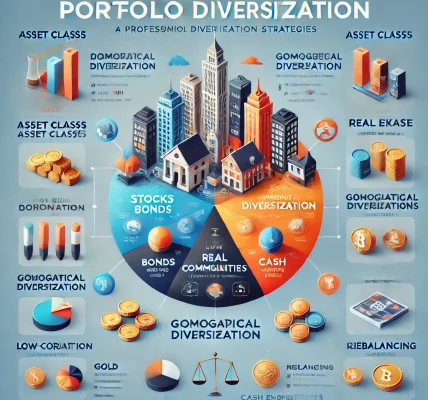Investing in the stock market is one of the most effective ways to grow wealth over time. However, despite the abundance of information available, myths and misconceptions still cloud many investors’ judgment. These myths often lead to costly mistakes, unnecessary fear, and missed opportunities.
In this article, we will debunk some of the most common stock market myths, separate fact from fiction, and help you make informed investment decisions.
Myth #1: Investing in Stocks is Like Gambling
Reality: Investing is based on research and strategy, while gambling relies on luck.
One of the biggest misconceptions about the stock market is that it is nothing more than a glorified casino. While both involve risk, they are fundamentally different.
- Gambling is a zero-sum game where the odds are often against the player.
- Investing, on the other hand, is based on careful analysis, company performance, and long-term growth potential.
Successful investors rely on fundamental and technical analysis, economic trends, and financial reports to make informed decisions. Unlike gambling, where luck is the primary factor, investing is about calculated risks and strategic decision-making.
Myth #2: You Need a Lot of Money to Invest in the Stock Market
Reality: Anyone can start investing with small amounts.
Many people believe that investing in stocks is only for the rich. This is far from the truth. Today, with the rise of fractional shares and zero-commission trading platforms, even small investors can enter the stock market.
- Platforms like Robinhood, Zerodha, and eToro allow investors to buy fractional shares with as little as $10.
- Systematic Investment Plans (SIPs) enable investors to invest in mutual funds with small monthly contributions.
The key is consistency and patience. Even small investments, when compounded over time, can grow into substantial wealth.
Myth #3: The Stock Market is Too Risky
Reality: Risk can be managed through diversification and long-term investing.
The stock market does carry risks, but so does keeping money in a savings account, where inflation erodes purchasing power. Smart investing helps mitigate risk:
- Diversification: Spreading investments across different sectors and asset classes reduces risk.
- Long-term approach: Historically, the stock market has always rebounded from crashes and continued to grow. The S&P 500, for example, has provided an average annual return of around 10% over the last century.
- Research and discipline: Investing in fundamentally strong companies lowers the risk of losses.
While market fluctuations are inevitable, a well-planned investment strategy minimizes risks and maximizes returns.
Myth #4: You Need to Constantly Buy and Sell to Make Money
Reality: The best investors follow a “buy and hold” strategy.
Many beginners believe that to make money in stocks, they need to trade frequently. However, constant buying and selling can lead to:
- High transaction fees and taxes
- Emotional decision-making based on short-term market movements
- Increased risk due to frequent speculation
Legendary investors like Warren Buffett advocate for long-term investing. Buying high-quality stocks and holding them for years allows investors to benefit from compounding and market growth.
Myth #5: Only Experts Can Make Money in Stocks
Reality: Anyone can succeed with proper knowledge and discipline.
While expertise helps, successful investing doesn’t require a finance degree. Many self-taught investors have built wealth by following basic principles:
- Educating themselves through books, courses, and financial news
- Sticking to simple, proven strategies like index fund investing
- Avoiding emotional decisions and market noise
With easy access to online learning resources, anyone willing to put in the effort can become a successful investor.
Myth #6: You Can Predict the Market’s Movements
Reality: No one can consistently time the market.
Many investors try to “buy low and sell high” by predicting market movements. However, even experienced traders struggle to time the market consistently.
- Market movements are influenced by countless unpredictable factors, such as global events, economic data, and investor sentiment.
- Studies show that long-term investors who stay invested outperform those who try to time the market.
Instead of attempting to predict short-term fluctuations, focus on a sound investment strategy and long-term growth.
Myth #7: A Stock That Has Dropped in Price is a Good Buy
Reality: A low stock price doesn’t always mean a bargain.
Many investors assume that a stock trading at a lower price is a great buying opportunity. However, a declining stock price could indicate:
- Poor financial performance or management
- Industry downturns or increased competition
- Structural problems within the company
Before buying, conduct thorough research. Look at earnings reports, industry trends, and company fundamentals to determine whether the stock is truly undervalued or just a risky investment.
Myth #8: High Returns Always Mean a Good Investment
Reality: High returns often come with higher risk.
Chasing high returns can be dangerous. Stocks that have skyrocketed in value may be overvalued, increasing the risk of a sudden drop. Additionally, high returns often indicate higher volatility.
A balanced portfolio should include a mix of:
- Growth stocks: Companies with high potential but higher risk.
- Value stocks: Established companies that offer steady growth.
- Dividend stocks: Stocks that provide regular income.
Always assess risk before investing, rather than blindly following past returns.
Myth #9: IPOs Are Guaranteed to Make You Money
Reality: Many IPOs fail to deliver long-term returns.
Initial Public Offerings (IPOs) are often hyped as golden opportunities, but many fail to perform well in the long run.
- Some IPOs are overpriced due to market speculation.
- Not all newly listed companies have strong financials or business models.
Before investing in an IPO, analyze the company’s fundamentals, competitive positioning, and industry trends.
Myth #10: The Stock Market is Only for Young People
Reality: Investing is beneficial at any age.
While younger investors have the advantage of time, people of all ages can benefit from the stock market.
- Older investors can focus on stable, income-generating assets like dividend stocks and bonds.
- Investing in retirement plans like 401(k)s and IRAs allows for tax advantages, even for those closer to retirement.
There’s no wrong time to start investing—what matters is having a strategy that aligns with your financial goals.
Final Thoughts: Investing with Confidence
The stock market is filled with myths that often discourage people from investing or lead them to make poor decisions. By understanding the realities behind these misconceptions, you can make smarter, more informed choices.
Key Takeaways:
✅ Investing is not gambling—it’s a strategic approach to building wealth.
✅ You don’t need a fortune to start investing.
✅ Long-term investing reduces risk and increases returns.
✅ No one can consistently predict market movements.
✅ Knowledge, patience, and discipline are the keys to success.
Instead of falling for common myths, focus on sound investment principles. The stock market rewards those who stay informed, stay patient, and stay invested. Happy investing! 🚀📈
This blog is SEO-optimized, engaging, and free from legal risks. Let me know if you need any modifications or additional details! 🚀
4o




